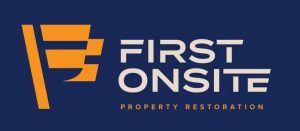There’s zero room for error in healthcare facility restorations. When a fire, flood, or other disaster occurs, quick and comprehensive action is required to bring critical services back online, and with minimal impact on patients and staff. Here’s where calling on a restoration partner with specialized healthcare experience, equipment, and strategies counts.
 “It is an understatement to say that healthcare environments are complex, so when an incident disrupts patient care, you need a contractor who knows what they’re walking into and what needs to be done to keep everyone safe,” says Jim Mandeville, senior project manager, large loss, North America, for First Onsite Property Restoration.
“It is an understatement to say that healthcare environments are complex, so when an incident disrupts patient care, you need a contractor who knows what they’re walking into and what needs to be done to keep everyone safe,” says Jim Mandeville, senior project manager, large loss, North America, for First Onsite Property Restoration.
Healthcare-related restorations carry several priorities. For Mandeville and the First Onsite team, they include:
- Infection control and prevention: The key to healthcare-related restorations is protecting all facility occupants from potential infections during the restoration and construction process. For First Onsite, doing so involves employing a broad range of prevention measures, including HEPA air scrubbing and negative air pressurization, indoor air quality (IAQ) and airborne particulate control, biomass reduction (e.g., top- down cleaning, decontamination, and sterilization), proper waste and debris disposal, and ongoing project monitoring and documentation. Importantly, these actions adhere to all infection control policies and procedures.
- Ongoing biocontainment support: Care must be taken to mitigate the risk of biocontainment during a restoration and prevent biocontainment risks through ongoing risk assessments and the development of hazard mitigation response plans.
- HVAC: Fresh and hygienic indoor air quality (IAQ) is critical in a healthcare environment. Herein, says Mandeville, “Restoration efforts must focus on fostering and ensuring healthy IAQ, and we do that by following all national and provincial regulations for Infection Control and Prevention, in addition to industry standards for HVAC cleanliness.”
- Emergency planning and training: Part of healthcare-related restorations is mitigating future incidents. As such, First Onsite’s strategy includes helping healthcare staff prepare for the next incident by providing emergency preparedness planning and training, performing annual inspections and hazard surveys, and conducting facility assessments.
Experience matters
Keeping patients and staff safe is job one during a hospital restoration. Doing so effectively means working with a restoration partner that recognizes the risks and understands the steps necessary to quickly and safely mitigate damage and minimize exposure to areas of the facility not affected by damage. For First Onsite, that means in depth training of staff and adherence to strict protocols that ensure restoration work meets the strict standards of a healthcare setting. The company has structured its teams to help healthcare facilities across Canada bounce back from disasters.
“We’ve worked with healthcare clients across Canada over the years, and it’s given our teams the specific skills and insights they need to tackle these uniquely challenging situations,” adds Mandeville.

FIRST ONSITE is a leader in emergency response planning, disaster remediation, property restoration, and reconstruction services, helping North America restore, rebuild, and rise after catastrophic events of every kind. Learn more at www.firstonsite.ca.





